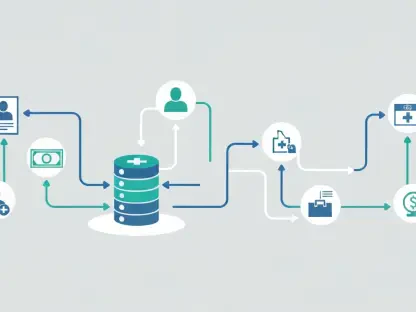In an era where cyber threats are increasingly sophisticated and financial losses from cybercrime skyrocketing, businesses must prioritize secure software design more than ever. According to the FBI, cybercrime cost the United States over $12.5 billion last year alone. Traditional coding and security approaches have proven insufficient, often leaving substantial vulnerabilities within software systems. This pressing need for better security has led to the emergence of “secure-by-design” principles, which emphasize security integration at every stage of software development. The US Cybersecurity and Infrastructure Security Agency (CISA) has laid out specific actions that vendors can take to prove their adherence to these crucial principles.
Integrating Secure-by-Design Practices into Vendor Risk Assessments
The Need for Vendor Responsibility
Michael Riemer, Field Chief Information Security Officer at Ivanti, highlights a critical point for the IT industry: software vendors should assume full responsibility for their products’ security. Security considerations should be inherent in every aspect of the software, from architecture design to storage, connectivity, and usage. This comprehensive approach ensures that potential vulnerabilities are identified and mitigated early in the development process. Incorporating secure-by-design practices into vendor risk assessments empowers enterprises to evaluate the security posture of their software suppliers effectively. One tangible step businesses can take is to demand SOC 2 Type 2 reports. These reports are independent cybersecurity audits conducted over some time, assessing a vendor’s internal security controls comprehensively. They offer valuable insights into the vendor’s commitment to maintaining robust security measures.
Key Questions for Vendors
To effectively assess a vendor’s secure-by-design claims, businesses should be prepared to ask specific, detailed questions about their security practices. Important inquiries include the frequency and types of penetration testing the vendor performs, as well as whether they conduct both static and dynamic code analysis. These questions are not just checklist items but are critical to understanding how deeply security is embedded in the vendor’s development process. Riemer notes that traditional sequential coding processes often allow weaknesses to remain throughout the codebase. To counter this, Ivanti has restructured its development teams into “pods” that include dedicated security architects. These architects focus on identifying and addressing vulnerabilities early, ensuring a more secure final product. This innovative approach illustrates how vendors can adopt secure-by-design habits that proactively eliminate risks rather than reactively addressing them.
Promoting Transparency and Accountability in Secure-by-Design Practices
Transparency as a Policy
Beyond internal security measures, the transparency of secure-by-design goals is equally essential. Vendors should publicly disclose their security goals and provide regular updates on their progress. This transparency is not merely about fulfilling a checklist; it offers customers tangible proof of the vendor’s ongoing commitment to security. Publicly available metrics and progress reports allow enterprises to scrutinize and monitor their suppliers, building trust based on demonstrated performance rather than mere promises. For instance, Ivanti plans to start publishing quarterly updates on their secure-by-design metrics beginning in October 2024. This move sets a precedent in the industry, encouraging other vendors to follow suit and adopt similar transparency measures. When a vendor openly shares its security goals and achievements, it provides a clear framework for customers to evaluate ongoing security commitments without ambiguity.
Continuous Improvement and Reporting
Regular reporting on secure-by-design metrics is crucial for holding vendors accountable and driving continuous improvement. Enterprises should look for vendors who are not complacent with a one-time audit but are committed to ongoing assessments and enhancements of their security measures. This dynamic approach ensures that software remains resilient against evolving cyber threats. Transparent reporting also allows vendors to receive constructive feedback from both their clients and the broader cybersecurity community, fostering a collaborative environment aimed at enhancing overall security standards. Ivanti’s commitment to quarterly updates on their secure-by-design progress exemplifies this approach. By consistently reporting their security metrics, they not only hold themselves accountable but also align their practices with industry best standards, setting a high bar for competitors. This strategy significantly enhances the credibility and reliability of secure-by-design claims.
The Core Business Requirement of Secure-by-Design
Minimizing Business Risks
The principle of securing software by design transcends technical concerns; it has become a core business requirement. IT and business leaders must ensure their software suppliers adopt secure-by-design principles to minimize business risks effectively. This proactive stance helps prevent costly breaches and data leaks, safeguarding the organization’s reputation and financial standing. In doing so, enterprises must make secure-by-design practices a central aspect of their vendor risk assessments. By evaluating a vendor’s coding methodologies and demanding transparency in their security goals, businesses can make informed decisions that better protect them from the ever-growing landscape of cyber threats. Making security a cornerstone of software development ensures that vulnerabilities are addressed long before they can be exploited, adding an indispensable layer of protection.
Implementing Secure Practices
In today’s world, where cyber threats are increasingly sophisticated and the financial toll from cybercrime is soaring, businesses must prioritize secure software design more than ever before. According to the FBI, cybercrime cost the United States over $12.5 billion just last year. Traditional coding and security methods have repeatedly proven insufficient, often leaving significant vulnerabilities within software systems. This urgent need for better security has led to the rise of “secure-by-design” principles, which focus on integrating security at every stage of software development. The US Cybersecurity and Infrastructure Security Agency (CISA) has outlined specific measures that vendors can adopt to demonstrate their commitment to these essential principles. By embedding security protocols from the outset, companies can mitigate risks and protect sensitive data more effectively. In a landscape filled with cyber risks, a proactive stance on security isn’t just a best practice—it’s a necessity. Secure-by-design methodologies offer a robust framework for creating resilient software, ensuring that security is not an afterthought but a foundational element.









